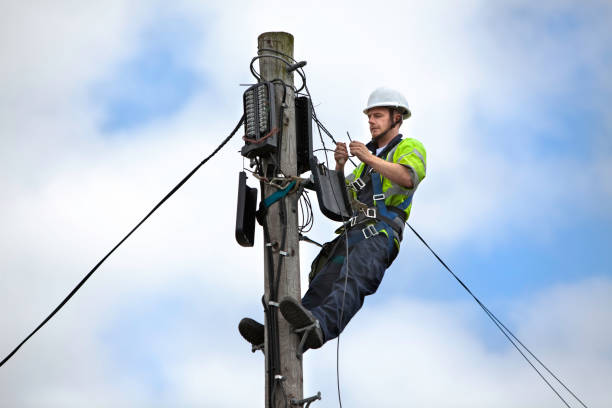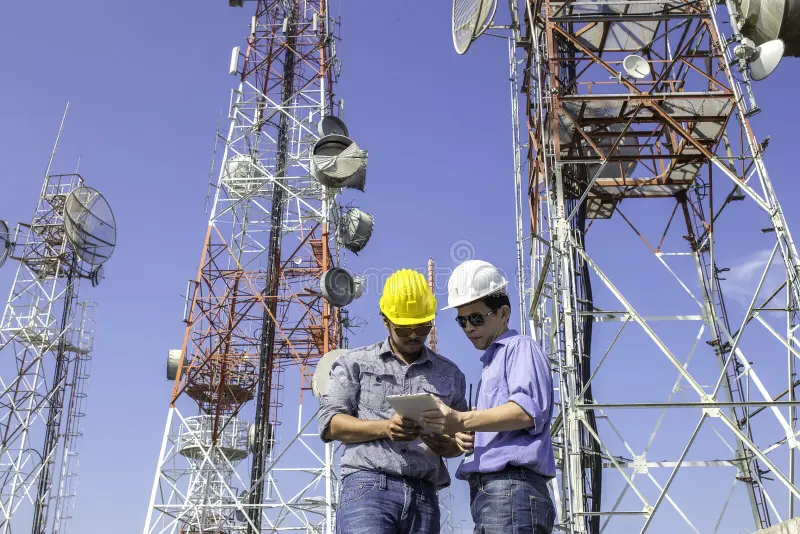Design Development
The design development phase focuses on transforming the project concept into a detailed technical blueprint for the telecommunications system. Network design involves creating the architecture for the system, such as fiber optics, wireless, or satellite networks. Capacity planning estimates the required scalability to handle data, voice traffic, and future growth. Hardware and software selection ensures the right components and protocols are chosen for efficient network operation, maintaining compatibility with existing systems. System integration ensures all network components, such as base stations, routers, and servers, work together seamlessly to create a functional and efficient network.
Permit and Regulation Compliance
In telecom engineering, ensuring compliance with local, regional, and international regulations is essential. Licensing ensures the necessary telecom permits for spectrum allocation and service provision. Health and safety regulations ensure compliance with standards regarding electromagnetic radiation and tower construction. Environmental regulations address the impact on the environment, while data protection ensures adherence to privacy laws, especially for user data in telecom services.
Feasibility Studies
Feasibility studies in telecommunications engineering evaluate the viability of a proposed system by examining technical, financial, market, and operational aspects. Technical feasibility ensures the solution can be implemented with available technology and expertise. Market feasibility assesses customer demand, competition, and revenue potential. Financial feasibility includes cost analysis and ROI predictions, helping gauge financial sustainability. Operational feasibility examines the practicality of day-to-day operations, including staffing and logistics. These studies provide a comprehensive view of the project’s potential success.
Cost Estimation
Accurately estimating costs is crucial for managing telecom project budgets. Capital Expenditure (CapEx) covers the infrastructure setup, including towers, fiber optics, and equipment. Operational Expenditure (OpEx) accounts for ongoing costs like maintenance, staffing, and energy. Contingency budgeting ensures there is a reserve for unexpected expenses during implementation. Cost optimization focuses on identifying areas for cost reduction through technological advancements or process improvements.
Risk Analysis
Identifying potential risks early helps in managing them effectively. Technical risks involve issues like hardware failures or software incompatibility. Financial risks arise from economic instability or changing customer demand. Regulatory risks include changes in laws that may impact operations, while operational risks involve disruptions like supply chain issues or project delays.
Quality Assurance
Ensuring that the telecommunications system meets quality standards involves several key processes. Network testing assesses reliability, speed, coverage, and performance. Compliance testing ensures the system adheres to industry standards and regulatory requirements. Performance metrics are set for benchmarks like bandwidth, latency, and uptime, and continuously monitored. Customer satisfaction is gauged by collecting feedback from initial users to confirm the service meets expectations.
Sustainable Design
Designing with sustainability in mind reduces both environmental impact and operational costs. Energy efficiency involves using low-power components and renewable energy sources for off-grid locations. Waste reduction strategies include recycling and proper disposal of old equipment. Ecosystem impact focuses on minimizing the ecological footprint, while long-term sustainability ensures the network can adapt to future technological advancements without major redesign.
Project Evaluation
After project completion, evaluating success is vital for future improvements. Performance analysis compares actual network performance with projected benchmarks like speed, coverage, and reliability. Budget assessment ensures the project stayed within the estimated budget and identifies any cost overruns. Customer satisfaction is gauged through user feedback and service experience. A post-implementation review identifies lessons learned and areas for improvement in future telecom projects.
Infrastructure Analysis
Analyzing the existing infrastructure is crucial to determine if it can support the new project or needs upgrades. Current network evaluation reviews the performance and limitations of existing telecom infrastructure, such as cellular towers and fiber networks. Upgrade requirements identify areas that need enhancement, such as adding more base stations or expanding fiber optic cables. Integration potential assesses how the new system will integrate with legacy telecom networks to ensure seamless interconnection.
Site Selection
Proper site selection is key to the success of telecommunications infrastructure. Location criteria focus on areas with high demand for services and low existing coverage. Access to resources ensures the site has easy access to power, fiber optics, and transportation. Environmental factors ensure the site meets regulatory requirements related to land use and emissions. Network coverage optimizes site choice to maximize coverage and minimize interference, especially for cell towers.






